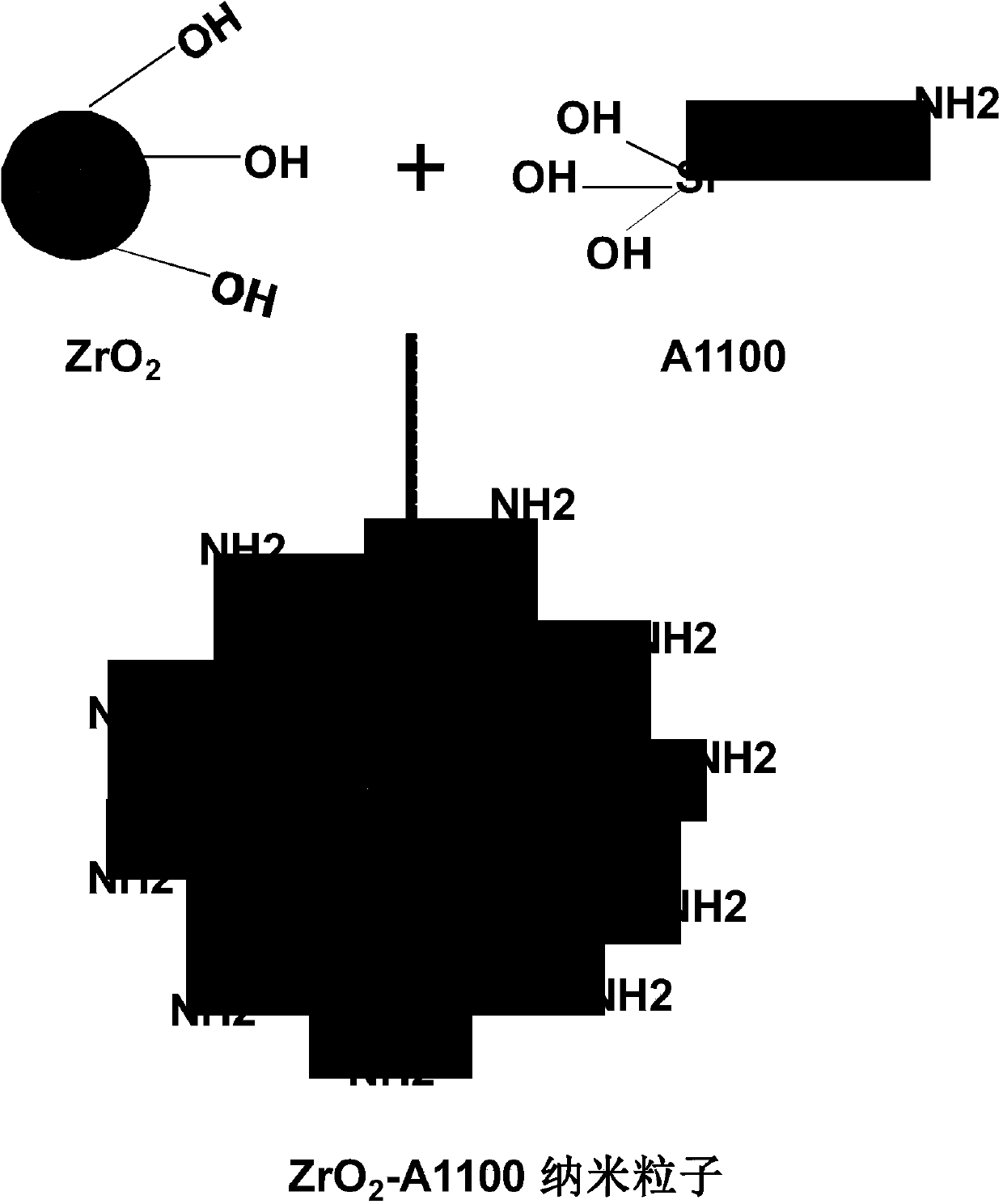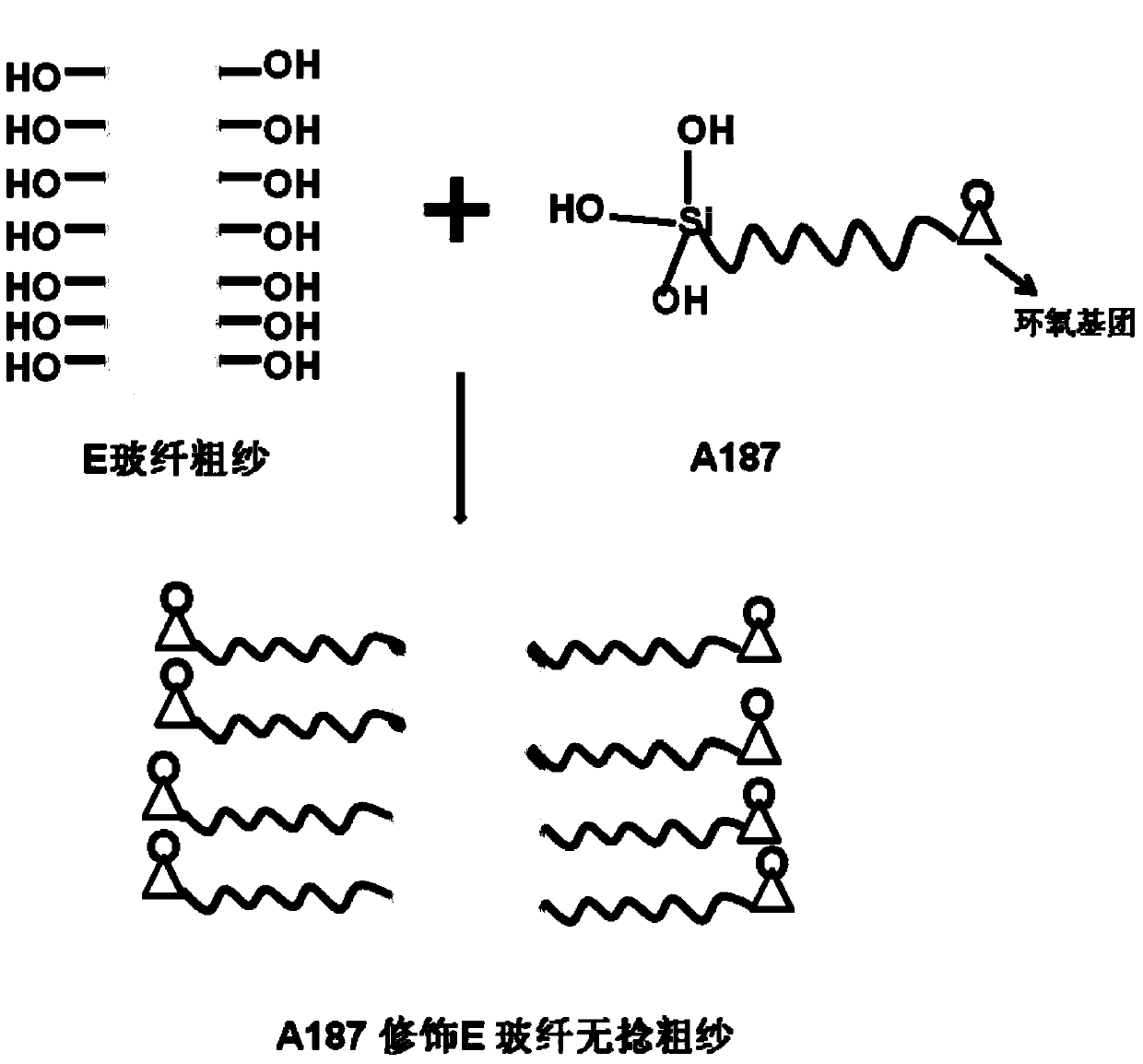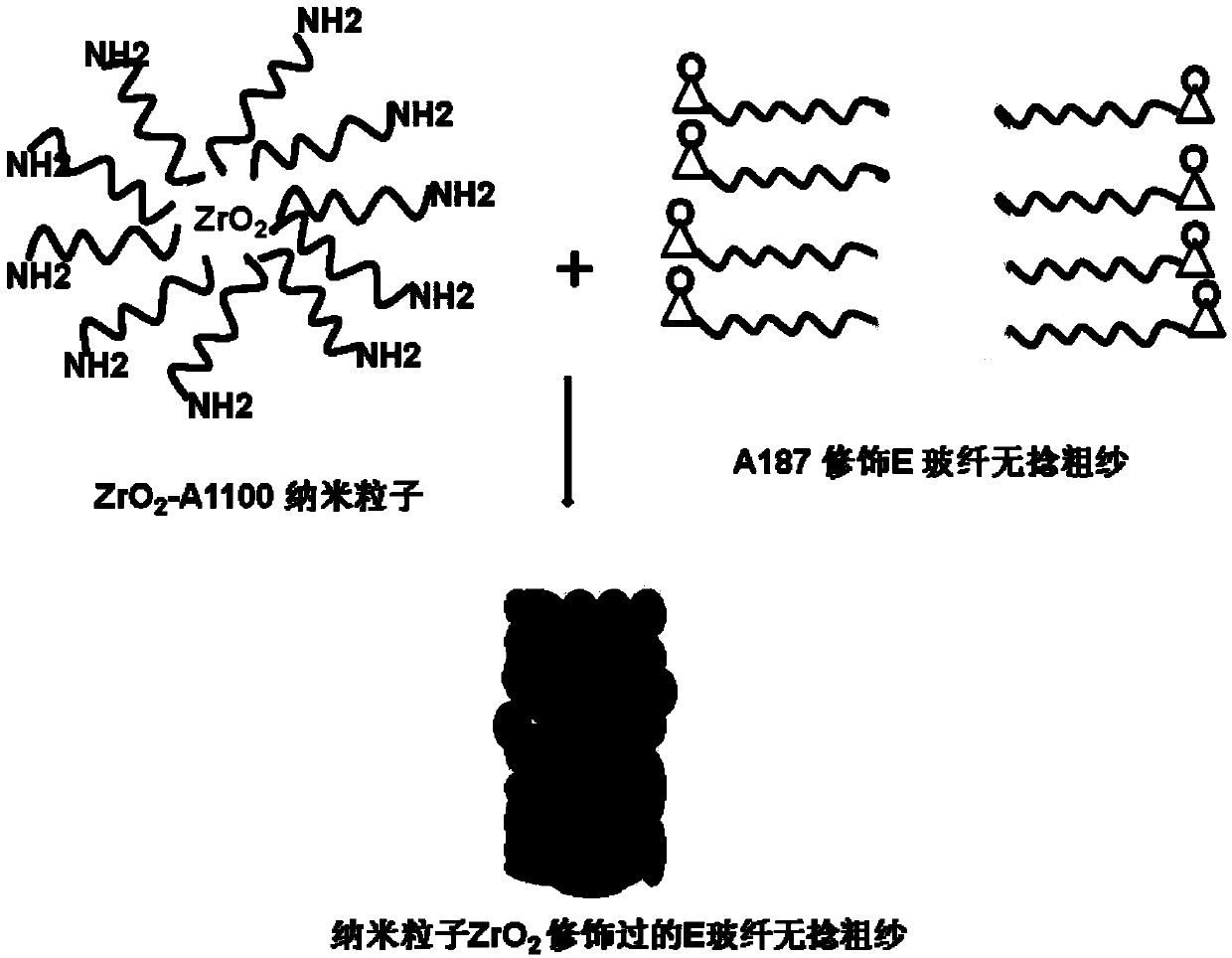Preparation method for alkali-resistant fiberglass
A glass fiber and alkali-resistant technology, applied in the field of alkali-resistant glass fiber preparation, can solve problems such as poor alkali resistance, influence of other physical properties of glass fiber mechanical properties, product performance fluctuations, etc., to improve alkali resistance and improve The effect of alkali resistance effect
- Summary
- Abstract
- Description
- Claims
- Application Information
AI Technical Summary
Problems solved by technology
Method used
Image
Examples
Embodiment 1
[0027] ① Select an ordinary untwisted E glass fiber roving A and place it in a 400°C horse-boiling furnace for 3 hours to fully remove the surface sizing agent;
[0028] ② Prepare 1% concentration of A187 deionized water solution, soak this type of glass fiber roving A in which the sizing agent has been removed in 1% concentration of A187 solution for 1-2 minutes, take it out and dry it at room temperature for later use;
[0029] ③Modify nano-zirconia particles with A1100: Weigh 10 grams of nano-zirconia particles, ultrasonically disperse them in a three-necked flask with 500 ml of deionized water / ethanol solvent (volume ratio 1:1), stir until evenly mixed, and drop 5 g of A1100 coupling agent, keep the temperature at 80°C for reflux reaction for 12 hours after the dropwise addition, use a high-speed centrifuge to separate the nano-zirconia particles modified by the coupling agent from the solvent, and then disperse these particles in deionized water Dipping the roving treated...
PUM
 Login to View More
Login to View More Abstract
Description
Claims
Application Information
 Login to View More
Login to View More - R&D
- Intellectual Property
- Life Sciences
- Materials
- Tech Scout
- Unparalleled Data Quality
- Higher Quality Content
- 60% Fewer Hallucinations
Browse by: Latest US Patents, China's latest patents, Technical Efficacy Thesaurus, Application Domain, Technology Topic, Popular Technical Reports.
© 2025 PatSnap. All rights reserved.Legal|Privacy policy|Modern Slavery Act Transparency Statement|Sitemap|About US| Contact US: help@patsnap.com



